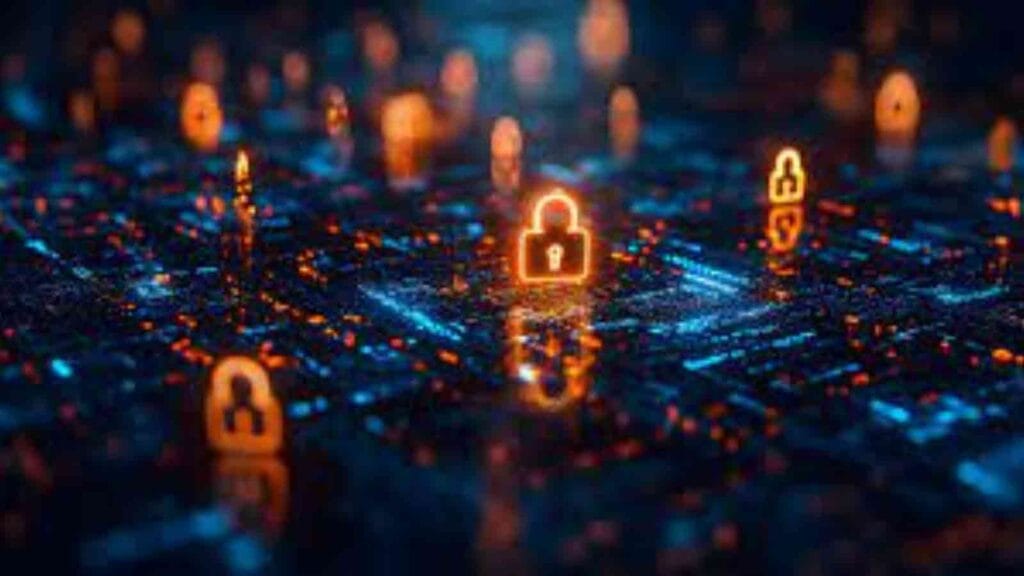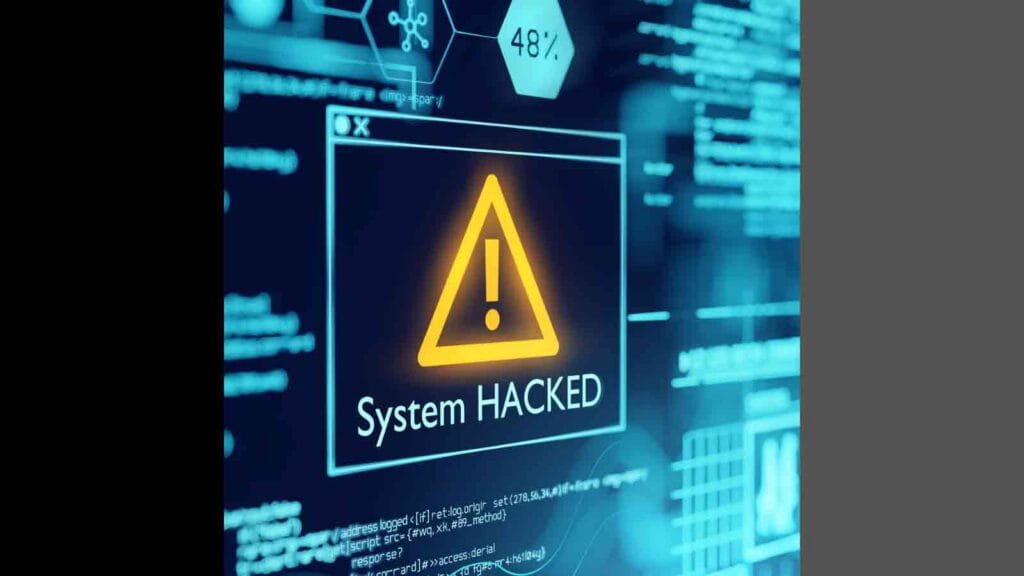Quantum Hacking Threat: The majority of small businesses believe that cyberattacks are an issue of a big company. They think that because of their minimal digital presence, they are not good targets of advanced threats. However, within a few years, the face of cybersecurity will be changed radically, and possibly, catastrophically. Quantum computers, which were just a science fiction yesterday, are fast becoming mature and may prove deadly to the world today with the most resilient encryption system – your business information, clientele, and bank account information.
Table of Contents
Quantum computing uses the properties of quantum mechanics to make the computations that classical computers could not. The quantum bits (qubits) can be 0, 1 or in both superposition (a state) in contrast with traditional bits, which are 0 or 1, and can be connected to each other (a phenomenon known as entanglement).
The properties enable quantum computers to solve specific problems with exponentially higher speed when compared to even the most advanced supercomputers. Although the possibilities created by this are truly astronomical in terms of medical progress, materials science, and AI, it poses an existential threat to our existing digital security system. The main issue is that the encryption standard that protects almost all online communication and data storage nowadays will be essentially exposed to these new quantum capabilities.
Read About: The Secret Behind AI Hallucinations Explained in 2025 | Why Does AI Lie?
What Is Quantum-Safe Encryption? | Post-Quantum CryptoGraphy

Quantum-safe encryption or post-quantum cryptography (PQC) is cryptographic algorithms that are resistant to the attacks of classical and quantum computers. Not the use of quantum computers to encrypt, but to create preferred mathematical problems that a quantum computer will not be able to solve easily. This is a significant contrast to classical encryption schemes such as RSA (Rivest-Shamir-Adleman) and ECC (Elliptic Curve Cryptography) which are based on encryption problems that are computationally infeasible to solve under the resources of a conventional computer in a feasible time, whereas quantum computers, with such algorithms as the Shor algorithm, can easily solve them.
The basis of our digital world, traditional encryption relies on the difficulty of some mathematical operations. An example of this is RSA which is based on the difficulty of decomposing very large numbers into their internal building blocks. ECC, applied commonly in smaller key size and mobile applications is based on the hardness of the elliptic curve discrete logarithm problem.
Both these, being devastatingly powerful against classical attacks, are the very kind of things quantum algorithms are meant to destroy. Quantum-safe encryption, in its turn, investigates completely new mathematical foundations, typically based on such directions as lattice-based cryptography, code-based cryptography, multivariate polynomials cryptography, and hash-based cryptography. To make them resilient and interoperable, these new algorithms are being strictly developed and standardized by organizations such as U.S. National institute of standards and technology (NIST).
Why small businesses Can’t Ignore Quantum Hacking? | Quantum Hacking Risk for Business
It has been spread widely that it is only governments, intelligence services, and tech giants who should be worried about quantum hacking. The fact is much more depressing to small and medium-sized enterprises (SMEs). Cybercriminals often consider SMEs as soft targets due to the fact that, in many cases, they do not have the strong cybersecurity budgets and specialized IT departments that corporations have. Quantum Hacking Risk for Business:
- Customer Personal Identifiable Information (PII): Name, addresses, contact information, social security numbers.
- Payment Data: Bank account numbers, credit card numbers.
- Healthcare Records: In the case of clinics, dental offices or wellness centers.
- Trade secrets and intellectual property: designs, formulae, client list, business plan.
- Financial Records: Investigations, bills, taxes.
How Quantum Computers Crack Encryption?
The main vulnerability to the existing public-key cryptography (such as RSA and ECC) is the Shor algorithm, invented by mathematician Peter Shor in 1994. Simply stated, the algorithm of Shor provides a quantum computer with a dramatically quicker means of factoring large numbers and computing discrete logarithms problems – the mathematical basis of the encryption that we currently use.

Consider a conventional lock, in which the key is a number with a 1,000 digits. Classical computers would be forced to search each possible combination at a time and it would require billions of years to determine all the possible combinations, even with the best supercomputers. This is why our encryption will be said to be secure; the computational effort it takes to crack the encryption is made so hard that it becomes practically impossible.
Suppose now a quantum computer with the algorithm of Shor. It doesn’t try keys one by one. It is able to investigate all possible keys simultaneously in a kind of quantum phenomenon known as superposition. Although the quantum mechanics involved are complicated, the outcome is similar to the possession of a magical key to the master which can open the lock nearly immediately. A quantum computer powerful enough can crack these locks in minutes or hours as opposed to billions of years.
This is the basic distinction as to why quantum-safe cryptography is not something that can be improved but a shift in paradigm. The quantum computers and classical computers base their post-quantum algorithms on hard problems, problems that can not be efficiently solved with Shor algorithm and other quantum attacks.
Quantum-Safe Solutions For Business to Protect

The upside of it is that a new generation of quantum-safe solutions is being developed and tested by the global cryptography community. These include:
- Post-Quantum Algorithms (PQC Algorithms): Its completely novel mathematical constructions that are thought to be quantum resistant. Examples that are in progress of standardization by NIST are:
- CRYSTALS-Kyber: A lattice-based algorithm that was selected to implement public-key encryption and key-establishment. It is efficient and very secure.
- CRYSTALS-Dilithium: This is another lattice-based algorithm which is chosen as a digital signature, and it provides strong authentication.
- Falcon: A lattice based and very efficient signature algorithm.
- Sphincs+: An example of a stateless hash-based signature scheme, which provides an alternative way to security.
Post-Quantum Cryptography Vs Other Cryptography Models
Hybrid Cryptography: Due to the existing doubt, and the necessity to have a transition stage, hybrid cryptography is a combination of the old classical encryption algorithms with new post-quantum algorithms. Using the example of a single TLS (Transport Layer Security) session, both ECC and classical security and Kyber and quantum-safe key exchange might be used.
This gives a belt and suspenders solution, in that in case one algorithm is compromised (either by a classical attack or quantum attack), the other may still secure the communications. It is also a practical implementation to deploy at this moment.
Quantum Key Distribution (QKD): QKD is a system of safe key communication in the rules of quantum mechanics. It provides information-theoretic security, i.e. its security is ensured by the physics of things and it is impossible to break it by a hacker who has unlimited computing power.
The Post- Quantum Cryptography (PQC): standardization activities by NIST are very important. Having spent years of assessment, they declared the initial group of algorithms as standardized in 2022 and are projected to complete the designation by 2025-2026. This schedule is important as it provides the businesses with a roadmap of where to go with the migration process.
Practical Steps SMEs Can Take Today To Avoid Hacking

Although it will still take years to have quantum computers that can break the existing encryption, the time to plan is today. SMEs can do a number of viable things to develop resiliency:
- Carry out a Thorough Cybersecurity Audit: Learn about the world you are in. Discover all the systems and applications and data that depend on encryption. In what location is sensitive data kept? How is it transmitted? What encryption solutions are applied (TLS versions, VPNs, disk encryption)? Such audit will establish a benchmark to your quantum readiness plan.
- Encrypt Everything Now (Best Practices): Make sure all sensitive data, both in rest and transit, is encrypted with the best classical encryption in the modern time. This includes:
- Emails: Secure email gateways as well as end-to-end encryption are to be used whenever possible.
- Data bases: Have sensitive fields and whole data bases encrypted.
- Cloud Storage: Cloud providers have encryption capabilities that should be used, and client-side encryption should be contemplated in the case of very sensitive data.
- Backups: Have all the backups encrypted.
- Hard Drives: Have a full disk encryption of company devices.
- Although that will not defend against a quantum attack in the future, it will put your adversary way up in the air regarding threats to date, and will place you in a good position to upgrade to a PQC.
Select Vendors That are already Preparing to go Post-Quantum Encryption: When purchasing new software, hardware, or cloud services, inquire with the vendors regarding the presence of quantum-safe roadmaps. Are they intending to implement NIST-standardized PQC algorithms? Do they have hybrid cryptography solutions? Give preference to the vendors that are aware of the impending threat of quantum and are already developing solutions. This will save you a considerable migration work in the future.
Educate Employees about Hygiene in the Cyberspace: The most sophisticated encryption may fall at the feet of a single human. The most important thing is regular training of employees according to cybersecurity best practices:
Phishing Awareness: How to Avoid Phishing?

Strong Passwords/Passphrases: Focus on individual complicated passwords and take into account a password manager.
- Multi-Factor Authentication (MFA): Set MFA on all high-priority accounts since it reduces the likelihood of an account being taken over to a considerable degree even in cases when they are stolen.
- Data Handling: Train the staff about the appropriate way of dealing with sensitive customer and business information.
Consider an Upgrade Path that is Future Proof: Begins to consider the ways your systems might be made PQC compliant. This involves:
- Inventory Management: Maintain an elaborate inventory of all cryptographic assets and dependencies.
- Agile Cryptography: This is to design new systems in a way that allows cryptographic agility, it is straightforward to replace algorithms as PQC standards evolve.
- Budgeting: Find funding on the next level of cryptographic improvements.
Business Case of Early Adoption of Quantum Computing

Being proactive on the quantum threat is not only a risk mitigation measure, but also a business strategic move that has a number of benefits:
Competitive Advantage and Customer Trust: quantum-readiness can be an effective source of differentiation. In the times, when the cases of data breaches are becoming more frequent, being proactive and showing the desire to invest in the latest security methods develops a massive confidence of customers. Companies that are able to assure their customers that their information is safeguarded against future attacks will be unique.
Possible Compliances: Interestingly, regulatory agencies in the finance, healthcare (HIPAA) and e-commerce (PCI DSS) industries are already planning to implement post-quantum encryption requirements as the threat grows real. Early acceptance puts your business in a situation to comply with these needs without any trouble and the incurred losses in form of a last minute rush and possible penalties.
FAQs
What is quantum-safe encryption?
Quantum-safe encryption is the term that is applied to recently developed cryptographic algorithms that are explicitly quantum-resistant, or that is, resistant to attacks by both classical (traditional) and future quantum computers. It is based on some mathematical principles that are not used in the current standard encryption techniques.
When are quantum computers going to crack existing encryption?
Although it is impossible to project an exact date, most observers assume that quantum computers with the ability to break the existing public-key encryption systems (such as RSA and ECC) will materialize in the next 5 to 15 years, commonly referred to as within a decade. The decrypt later- harvest now threat implies data stolen today may be decrypted later.
Should small businesses actually get post-quantum cryptography?
Absolutely. Small businesses deal with data that touch on sensitive information on customers, payment details, and business intelligence. Cybercriminals find this information just as useful as the data of big companies. Neglect of the post-quantum cryptography exposes your company to breaches in the future, damaged reputation, and losses.
Is Quantum Encryption in the current time?
Although the standardization of post-quantum cryptographic algorithms is currently in progress (the NIST is targeting final standards by 2025-2026), already, forward-thinking vendors offer solutions based on this. Standardized PQC is a multi-year-long process of migration out of which a business should begin to plan today.
Conclusion
Quantum computing is a real threat likely to have a material impact in the near future in the form of the coming encryption crisis. It is a short term fact that requires urgent consideration and proactive action by businesses of all magnitude particularly SMEs. It is a dangerous oversight to base on the old fashioned idea that quantum hacking is a problem of big companies.

